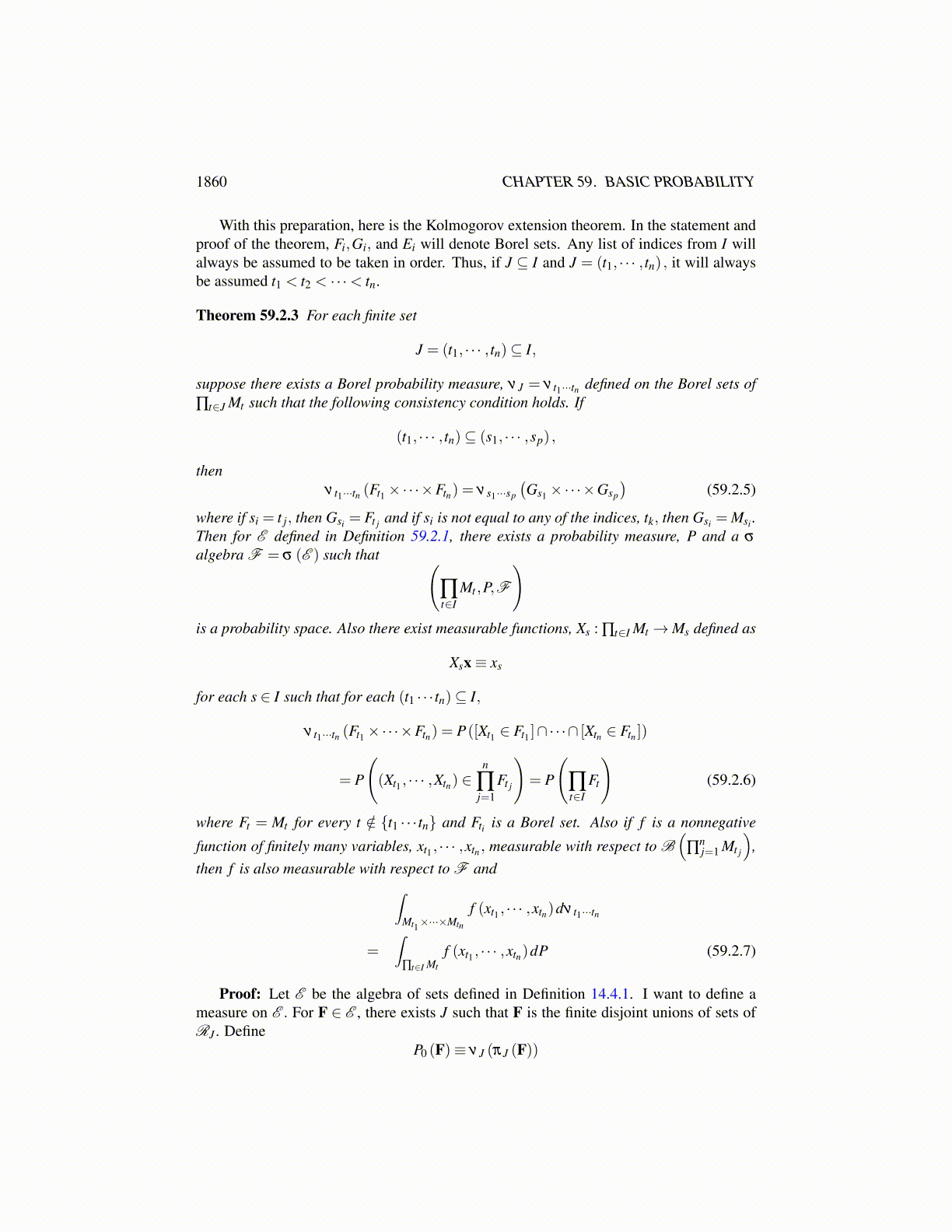
1860 CHAPTER 59. BASIC PROBABILITY
Corollary 59.1.11 Let X be a random variable (random vector) with values in a completemetric space, Z. Then λ X is an inner and outer regular measure defined on B (Z).
Proposition 59.1.12 For X a random vector defined above, X having values in a completeseparable metric space Z, then λ X is inner and outer regular and Borel.
(Ω,P) X→ (Z,λ X)h→ E
If h is Borel measurable and h ∈ L1 (Z,λ X;E) for E a Banach space, then∫Ω
h(X(ω))dP =∫
Zh(x)dλ X. (59.1.1)
In the case where Z = E, a separable Banach space, if X is measurable then X ∈L1 (Ω;E) if and only if the identity map on E is in L1 (E;λ X) and∫
Ω
X(ω)dP =∫
Exdλ X (x) (59.1.2)
Proof: The regularity claims are established above. It remains to verify 59.1.1.Since h ∈ L1 (Z,E) , it follows there exists a sequence of simple functions {hn} such
thathn (x)→ h(x) ,
∫Z||hm−hn||dλ X→ 0 as m,n→ ∞.
The first convergence above implies
hn ◦X→ h◦X pointwise on Ω (59.1.3)
Then letting hn (x) = ∑mk=1 xkXEk (x) , where the Ek are disjoint and Borel, it follows easily
that hn ◦X is also a simple function of the form hn ◦X(ω) = ∑mk=1 xkXX−1(Ek)
(ω) and byassumption X−1 (Ek) ∈F . From the definition of the integral, it is easily seen∫
hn ◦XdP =∫
hndλ X,∫||hn|| ◦XdP =
∫||hn||dλ X
Also, hn ◦X−hm ◦X is a simple function and so∫||hn ◦X−hm ◦X||dP =
∫||hn−hm||dλ X (59.1.4)
It follows from the definition of the Bochner integral and 59.1.3, and 59.1.4 that h◦X is inL1 (Ω;E) and ∫
h◦XdP = limn→∞
∫hn ◦XdP = lim
n→∞
∫hndλ X =
∫hdλ X.
Finally consider the case that E = Z and suppose X ∈ L1 (Ω;E). Then letting h be theidentity map on E, it follows h is obviously separably valued and h−1 (U) ∈B (E) for allU open and so h is measurable. Why is it in L1 (E;E)?∫
E||h(x)||dλ X =
∫∞
0λ X ([||h||> t])dt ≡
∫∞
0P(X ∈ [||x||> t])dt
≡∫
∞
0P([||X||> t])dt =
∫Ω
||X||dP < ∞